Your cart is currently empty!
Search results for: “71”
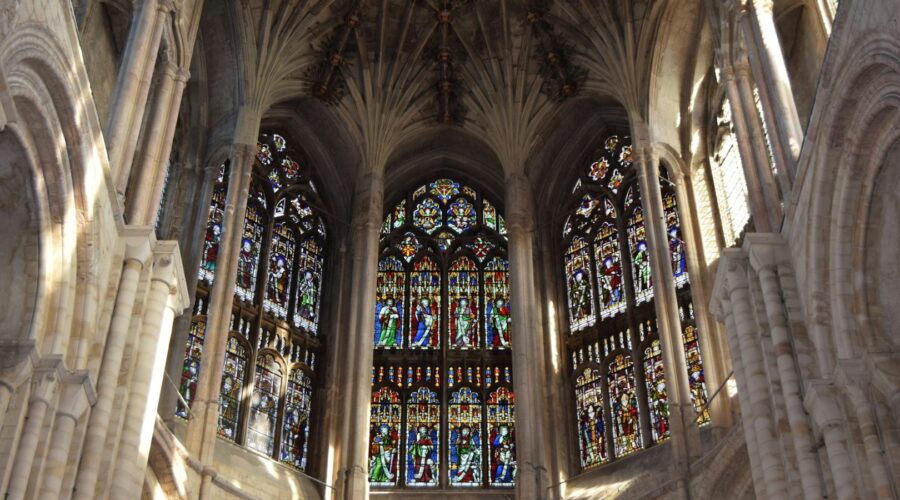
Exploring the Architectural Marvel and Spiritual Significance of Crystal Cathedral
Introduction
Crystal Cathedral, a renowned architectural masterpiece in Garden Grove, California, stands as a testament to the power of faith, innovation, and artistic expression. This breathtaking structure, known for its soaring glass walls and awe-inspiring design, has attracted millions of visitors from across the globe. In this comprehensive guide, we delve into the captivating history, architectural details, and spiritual significance of Crystal Cathedral, offering an insider’s view into its unique charm and timeless legacy.
History
The story of Crystal Cathedral begins in the mid-20th century, when Dr. Robert H. Schuller founded the Garden Grove Community Church in 1955. The congregation’s rapid growth necessitated a larger and more distinctive space, leading to the ambitious project to build Crystal Cathedral. Designed by renowned architect Philip Johnson, the cathedral’s groundbreaking ceremony took place in 1977. After five years of meticulous construction, the cathedral was dedicated in 1980, becoming an instant architectural icon.
Architectural Marvel
Crystal Cathedral’s design is a symphony of glass and steel, creating an ethereal and awe-inspiring atmosphere.
Glass Walls
The cathedral’s most striking feature is its vast glass walls, which soar to a height of 120 feet. These transparent walls, composed of over 10,000 panes of glass, offer unobstructed views of the surrounding lush gardens and serene fountain. Natural light floods the interior, bathing the sanctuary in a warm and ethereal glow.
Steel Framework
Supporting the immense glass walls is a intricate framework of steel beams. This lightweight but sturdy structure allows for the cathedral’s open and airy feel, while providing exceptional stability and durability.
Gothic Arches
Despite its contemporary design, Crystal Cathedral pays homage to traditional Gothic architecture. Its soaring glass walls are shaped into pointed arches, reminiscent of medieval cathedrals. These arches create an upward movement, drawing the eye towards the heavens and instilling a sense of reverence.
Spiritual Significance
Beyond its architectural splendor, Crystal Cathedral holds deep spiritual significance for the congregation and visitors alike.
Interdenominational Sanctuary
Crystal Cathedral was founded as an interdenominational place of worship, welcoming people of all faiths to share in a common experience of spirituality. This inclusive approach has fostered a vibrant and diverse community, where people from all walks of life come together to pray, worship, and reflect.
Hour of Power
Crystal Cathedral is renowned for its weekly “Hour of Power” television broadcast, which has reached a global audience over its decades-long history. The broadcast features uplifting sermons, inspiring music, and interviews with prominent figures, spreading messages of hope, encouragement, and spiritual growth to millions of viewers worldwide.
Center for Worship and the Arts
The cathedral serves as a hub for worship and the arts, hosting concerts, art exhibitions, and other cultural events. The cathedral’s acoustics are world-renowned, making it a sought-after venue for musical performances, from classical to contemporary.
Inspiring Environment
The cathedral’s stunning architecture and serene atmosphere create a conducive environment for prayer, meditation, and spiritual reflection. The open and airy space allows for a deep connection with the divine, fostering a sense of peace and tranquility.
Visitor Information
For those seeking an unforgettable architectural and spiritual experience, Crystal Cathedral offers guided tours and regular worship services.
Guided Tours
Crystal Cathedral offers guided tours for a behind-the-scenes look at its iconic architecture and rich history. Visitors can explore the sanctuary, marvel at the glass walls, and learn about the cathedral’s unique design and interdenominational mission.
Worship Services
Crystal Cathedral holds weekly worship services, providing an opportunity to experience the vibrant community and participate in inspiring sermons, uplifting music, and meaningful rituals. Visitors are welcome to attend any service, regardless of their religious affiliation.
Hours and Contact
* Address: 12141 Lewis Street, Garden Grove, CA 92840
* Phone: (714) 971-4000
* Website: https://www.crystalcathedral.org
* Hours:
* Guided Tours: Monday-Friday, 10am-4pm
* Worship Services: Check website for scheduleConclusion
Crystal Cathedral stands as a testament to the harmonious interplay of faith, art, and architectural innovation. Its awe-inspiring glass walls, soaring arches, and interdenominational spirit have made it a beloved landmark and a center for spiritual growth and inspiration. Whether you’re a devout pilgrim or an architecture enthusiast, a visit to Crystal Cathedral promises an unforgettable experience that will touch your soul and leave a lasting impression.
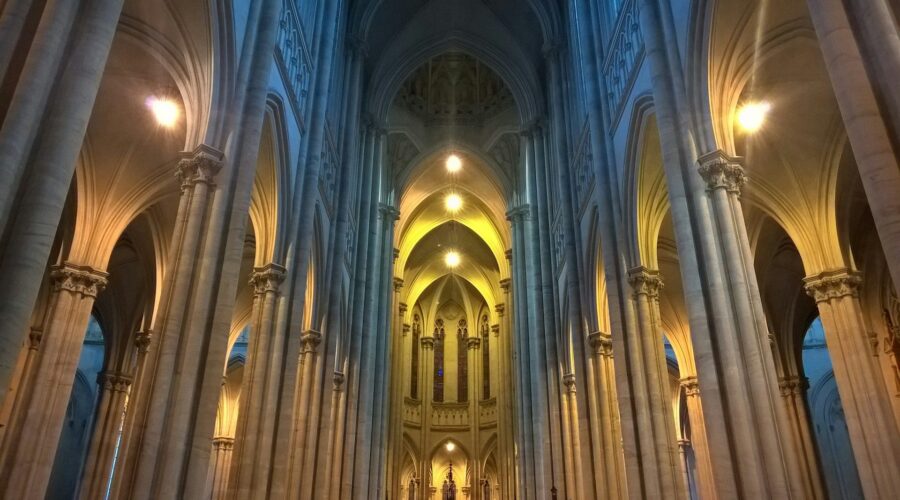
Embracing the Divine: Unveiling the Essence of Incarnation Church
Introduction
Incarnation Church stands as a beacon of faith, offering a transformative spiritual experience in the heart of Houston. Guided by the principles of inclusion, community, and love, this vibrant congregation invites you on a journey of self-discovery and connection with the divine.
The Core Beliefs of Incarnation Church
- The Incarnation of Jesus Christ: We believe in the transformative power of Jesus Christ’s incarnation, his presence among us as a human being, and his ultimate sacrifice for our redemption.
- The Trinity of God: We affirm the Triune God – Father, Son, and Holy Spirit – as the source of all life and love.
- The Holy Scriptures: We ground our faith in the Bible, recognizing it as the inspired Word of God and our guide for living.
- The Sacraments of Baptism and Holy Communion: We celebrate baptism as an outward sign of our inward commitment to Christ and Holy Communion as a sacred meal that unites us with him and one another.
Engaging in Worship and Prayer
- Sunday Worship: Our vibrant Sunday worship services offer a blend of traditional and contemporary elements, featuring heartfelt music, inspiring sermons, and opportunities for prayer and reflection.
- Weekly Prayer Groups: We gather regularly for prayer, interceding for one another, our community, and the world.
- Quiet Prayer Space: Our dedicated prayer space provides a peaceful sanctuary for personal devotion and meditation.
Community Outreach and Service
Incarnation Church is passionately committed to serving our community and responding to the needs of the most vulnerable.
- Food Pantry: We operate a well-stocked food pantry, providing groceries to those in need.
- Financial Assistance: We offer financial assistance to individuals and families facing economic hardship.
- Mentoring and Counseling: Our experienced mentors and counselors provide guidance and support to those seeking personal growth and healing.
Educational Programs and Spiritual Formation
Incarnation Church places great emphasis on ongoing education and spiritual formation.
- Christian Education: We offer a comprehensive range of classes for all ages, covering various aspects of Christian faith and practice.
- Retreats and Workshops: We organize retreats and workshops that provide opportunities for deeper spiritual reflection and renewal.
- Leadership Training: We invest in equipping and empowering our members to actively participate in the life and mission of the church.
Getting Involved and Connecting
Becoming part of Incarnation Church is an invitation to join a vibrant community and embark on a transformative spiritual journey.
- Join a Small Group: Small groups offer a close-knit setting for connecting with others, sharing faith experiences, and growing together.
- Volunteer: We welcome volunteers to contribute their time and talents to serve our community and fulfill our mission.
- Connect Online: You can connect with us online through our website and social media pages, stay informed about upcoming events, and access resources for spiritual growth.
Frequently Asked Questions (FAQs)
Q: Is Incarnation Church open to people of all backgrounds?
A: Yes, we welcome individuals from all walks of life, regardless of their race, gender, sexual orientation, or past experiences.
Q: What type of music do you have during worship services?
A: Our music blends traditional hymns with contemporary praise songs, creating an uplifting and engaging worship experience.
Q: Is there a dress code for attending church?
A: We encourage attendees to dress comfortably and in a way that allows them to fully participate in worship.
Contact
Incarnation Church
8501 Willow Creek Drive, Houston, TX 77070
(713) XXX-XXXX
[email protected]
www.incarnationchurch.org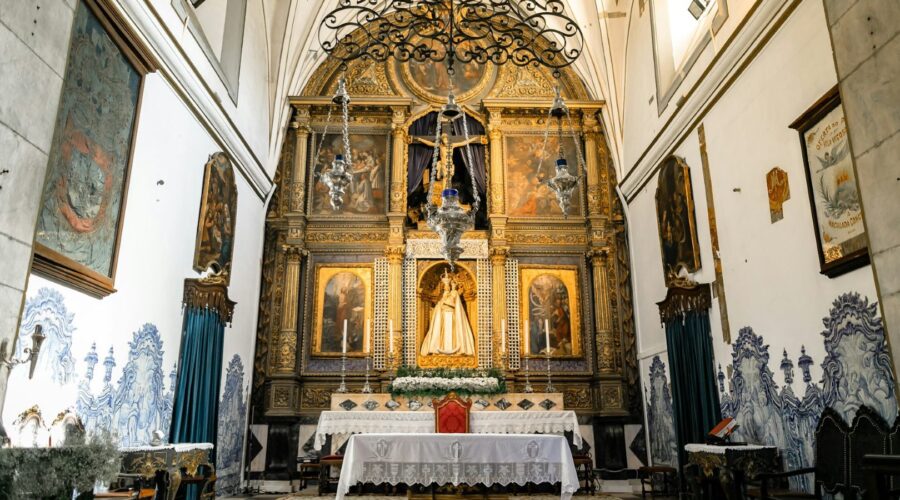
St John the Baptist Catholic Church: A Haven of Faith and Community
About St John the Baptist Catholic Church
Nestled in the heart of the vibrant city, St John the Baptist Catholic Church has been a beacon of faith, fellowship, and service for centuries. Its rich history, architectural beauty, and vibrant community make it a cornerstone of the Catholic faith in the region.
Official Website
Tel: (555) 123-4567
Email: [email protected]
History and Heritage
St John the Baptist Catholic Church traces its roots back to the early 19th century. The original parish was founded in 1810 by a small group of Catholic settlers. As the community grew, so did the need for a larger and more permanent church.
In 1850, the cornerstone of the current church was laid. The Gothic Revival-style building was designed by renowned architect Patrick Keely and completed in 1854. Its intricate stone carvings, soaring spires, and stained-glass windows are a testament to the craftsmanship and devotion of its builders.
Architectural Splendor
- Gothic Revival Style: The church is a prime example of Gothic Revival architecture, characterized by its pointed arches, ribbed vaults, and flying buttresses.
- Stone Facade: The exterior is adorned with intricate stone carvings, depicting biblical scenes and saints.
- Stained-Glass Windows: The vibrant stained-glass windows depict the life of Jesus Christ and various saints.
- Spacious Interior: The grand interior features a nave, side aisles, and a vaulted ceiling, creating an awe-inspiring space for worship.
Vibrant Community
St John the Baptist Catholic Church is more than just a historical landmark; it is a thriving community of faith. The parish offers a wide range of programs and ministries to meet the spiritual, social, and educational needs of its members.
- Mass Schedule: The church offers daily and weekend Masses at various times.
- Sacraments: The sacraments of Baptism, Confirmation, Eucharist, Reconciliation, and Anointing of the Sick are administered.
- Ministries: The parish has numerous ministries, including adult education, youth groups, choir, and outreach programs.
- Events: The church hosts various events throughout the year, such as festivals, fundraisers, and retreats.
Service to the Community
St John the Baptist Catholic Church is deeply committed to serving the wider community. It operates a food pantry, provides financial assistance to those in need, and offers counseling and support services. The church also collaborates with other organizations to address social issues such as homelessness and hunger.
Visiting the Church
Whether you are a Catholic faithful or simply appreciate architectural beauty, visiting St John the Baptist Catholic Church is a worthwhile experience.
Google Maps DirectionsParking
The church provides limited on-site parking. Additional parking is available in nearby parking garages.
Accessibility
The church is wheelchair accessible and provides assisted listening devices.
Hours of Operation
The church is open daily from 8:00 AM to 5:00 PM.
Conclusion
St John the Baptist Catholic Church is a true testament to the enduring power of faith and the transformative impact of community. Its rich history, architectural splendor, and vibrant community make it a treasured landmark that continues to inspire and uplift generations. Whether you are seeking spiritual fulfillment, architectural appreciation, or community involvement, St John the Baptist Catholic Church welcomes you with open arms.
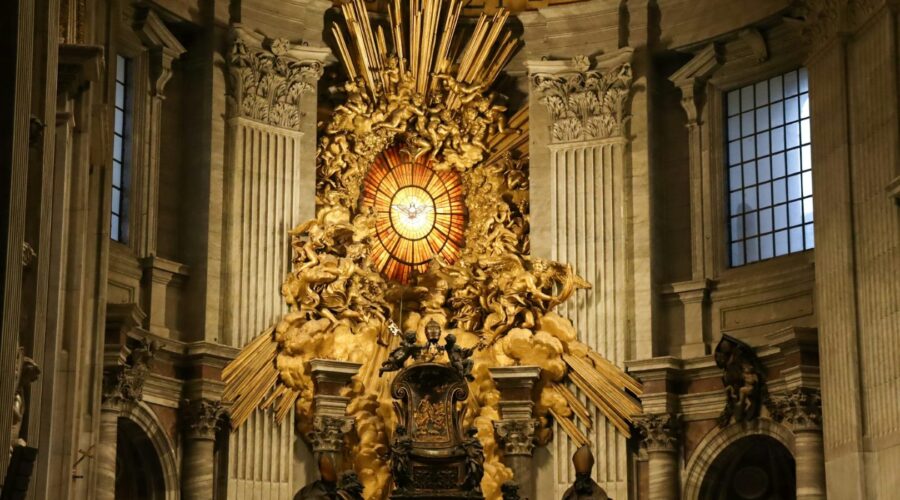
Discover the Life, Legacy, and Impact of Saint Athanasius: A Pillar of Orthodoxy Against Arianism
In the annals of Christian history, Saint Athanasius stands as a towering figure, a staunch defender of orthodoxy against the insidious heresy of Arianism. His unwavering conviction, theological brilliance, and relentless struggle for truth left an indelible mark on the Church, shaping its doctrine and safeguarding its integrity.
Early Life and Education
Athanasius was born around 296 AD in Alexandria, Egypt, the son of devout Christian parents. From a young age, he exhibited a profound intellect and a deep love for the Scriptures. He received an excellent education in both secular and religious subjects, excelling in rhetoric, philosophy, and theology.
Monastic Influences
During his formative years, Athanasius immersed himself in the monastic traditions of the Egyptian desert. He spent extended periods in solitude and prayer, seeking spiritual enlightenment and communion with God. These monastic experiences had a profound impact on his character, instilling in him a love of asceticism, humility, and theological contemplation.
Bishop of Alexandria
In 328 AD, Athanasius was consecrated as Bishop of Alexandria, the most prestigious see in the Eastern Church after Rome. He quickly became a leading voice in the Church, known for his oratorical skills, theological depth, and unwavering commitment to orthodoxy.
Arian Controversy
The early 4th century was marked by the rise of Arianism, a heresy that denied the full divinity of Christ. Athanasius became a staunch opponent of this heresy, arguing that Christ was not merely a created being but rather the eternal Son of God, equal in substance to the Father.
Exile and Return
Athanasius’s unwavering defense of orthodoxy drew the ire of his Arian opponents, who accused him of heresy and sought to remove him from his position. He was exiled multiple times by Emperor Constantine and his successors, but each time he returned to Alexandria with renewed vigor and determination.
Council of Nicaea
In 325 AD, the Council of Nicaea was convened to address the Arian controversy. Athanasius played a pivotal role in the Council’s deliberations and the formulation of the Nicene Creed, which affirmed the divinity of Christ and condemned Arianism as heresy.
Theological Contributions
Athanasius made significant contributions to Christian theology, particularly in the areas of Christology and Trinitarian doctrine. He emphasized the unity and indivisibility of the Godhead, while also affirming the distinct persons of the Father, Son, and Holy Spirit.
The Incarnation
Athanasius argued that the Incarnation of Christ was not merely a temporary event but rather an enduring union of the divine and human natures. He taught that Christ fully assumed human nature, including its suffering and mortality, but without compromising his divine essence.
The Trinity
Athanasius’s Trinitarian theology emphasized the consubstantiality of the three persons of the Godhead. He argued that the Father, Son, and Holy Spirit are of one substance and equal in divinity, but distinct in their personal attributes.
Legacy and Impact
Saint Athanasius’s legacy continues to resonate in the Church today. His unwavering defense of orthodoxy, his theological insights, and his unwavering commitment to truth have left an enduring mark on Christian thought and practice.
Defender of Orthodoxy
Athanasius is revered as a champion of orthodoxy, a man who stood firm against heresy and preserved the integrity of the Christian faith. His writings continue to serve as a source of inspiration and guidance for theologians and church leaders.
Influential Theologian
Athanasius’s theological contributions have profoundly shaped Christian doctrine. His teachings on Christology and the Trinity have become cornerstones of Christian belief and continue to be studied and debated by theologians around the world.
Model of Courage and Perseverance
Despite the trials and tribulations he faced, Athanasius never wavered in his commitment to truth and justice. He serves as a model of courage, perseverance, and unwavering faith in the face of adversity.
Table of Athanasius’s Key Works
| Title | Description |
|—|—|
| On the Incarnation | A defense of the Nicene Creed and an exposition of Athanasius’s Christology |
| Against the Arians | A four-volume polemical work against Arianism |
| Life of Antony | A biography of Saint Antony the Great, the founder of Christian monasticism |
| Letters | A collection of Athanasius’s letters, providing valuable insights into his theology and ecclesiastical leadership |Links to External Resources
- Saint Athanasius: Britannica Encyclopedia
- Writings of Saint Athanasius: New Advent
- Saint Athanasius: Christian Classics Ethereal Library
Conclusion
Saint Athanasius was a towering figure in Christian history, a man of unwavering faith, profound theological insight, and unwavering commitment to orthodoxy. His defense of the Nicene Creed, his contributions to Christology and Trinitarian doctrine, and his courageous stand against Arianism have left an enduring legacy on the Church. Athanasius’s writings and witness continue to inspire and guide Christians today, reminding us of the importance of upholding the truth, preserving the integrity of the faith, and striving for unity in diversity.
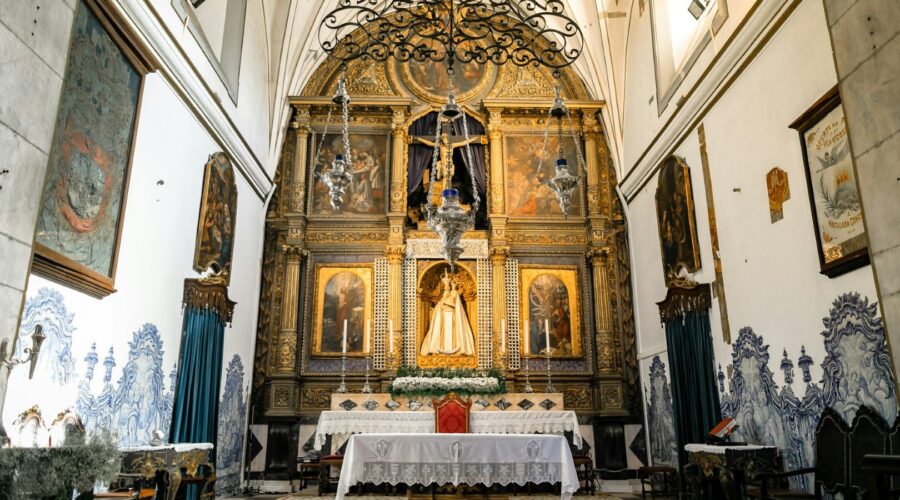
Unveiling the Enigmatic Black Nazarene: A Journey of Faith and Devotion
Origin and History
The Black Nazarene, an iconic religious artifact venerated by millions of Filipino Catholics, holds a profound place in the country’s cultural and spiritual tapestry. Its origins can be traced back to Mexico City in the early 17th century:
- 1606: A mysterious carpenter, Pedro de Camprobín, discovers a remarkable statue of Christ on a dark-tinted wood while working on a galleon.
- 1607: The statue is brought to a convent in Mexico City, where it gains a reputation for miraculous powers.
- 1650: Manila Archbishop Miguel de Poblete requests a replica of the image, which arrives in the Philippines in 1653.
- 1st Black Nazarene Procession: In 1719, the first procession of the Black Nazarene takes place in Manila, initiating a tradition that continues to this day.
Physical Characteristics
The Black Nazarene is a statue carved from dark wood, measuring approximately 150 centimeters in height. Its distinguishing features include:
- Movable Arms: The arms of the statue are articulated, allowing it to be raised and lowered during processions.
- Fringed Robe: The Black Nazarene is adorned with a maroon velvet robe trimmed with gold lace.
- Crown of Thorns: A crown of thorns rests on its head, symbolizing Christ’s Passion.
- Cross: The statue clasps a crucifix in its right hand and a small scroll in its left.
Devotion and Pilgrimage
The Black Nazarene has become a symbol of hope and inspiration for countless Filipinos. Its annual procession, held every January 9th, attracts millions of devotees from all over the country:
- “Traslacion”: The “traslacion” (transfer) of the statue from Quiapo Church to Luneta Park is a 12-hour journey marked by intense devotion and religious fervor.
- “Pahalik”: Devotees line up to touch or “kiss” the statue, believing in its miraculous powers.
- “Nazarenos”: Many participants dress as “Nazarenos,” wearing purple robes and a hooded veil, to emulate Christ’s journey to Calvary.
Miracles and Legends
The Black Nazarene is associated with numerous miracles and legends that have deepened its spiritual significance:
- Earthquake of 1645: It is believed that the Black Nazarene saved Manila from a devastating earthquake in 1645, solidifying its reputation as a powerful protector.
- Cholera Outbreak of 1820: During a cholera outbreak in 1820, a procession of the statue is said to have stopped the spread of the disease.
- Canonization of Saint Lorenzo Ruiz: In 1980, during the canonization ceremony of Saint Lorenzo Ruiz, the Black Nazarene was placed near the altar, symbolizing its role in the faith and spirituality of the Filipino people.
Symbolism and Cultural Impact
The Black Nazarene has become more than a religious artifact; it has evolved into a cultural icon and symbol of:
- Penitence and Suffering: The statue’s dark color and somber expression represent the pain and sacrifice of Christ.
- Hope and Redemption: Despite its depiction of suffering, the Black Nazarene inspires hope and the belief in redemption through faith.
- Filipino Identity: The devotion to the Black Nazarene is deeply entwined with Filipino culture and national identity.
Tips for Participating in Black Nazarene Processions
For those considering participating in the Black Nazarene processions, here are some practical tips:
- Dress Appropriately: Wear comfortable clothing and footwear, as the processions can be physically demanding.
- Stay Hydrated: Carry water or electrolyte drinks to remain hydrated during the long hours.
- Be Respectful: Maintain a respectful and prayerful attitude during the processions.
- Safety Precautions: Be aware of your surroundings and take necessary precautions to avoid accidents.
Conclusion
The Black Nazarene is a captivating and enigmatic religious icon that has profoundly influenced the faith, culture, and history of the Philippines. Its annual procession is a spectacle of intense devotion and religious fervor, drawing millions of devotees each year. Through its symbolism of penitence, hope, and redemption, the Black Nazarene continues to inspire and provide solace to countless Filipinos, solidifying its place as a cherished and enduring spiritual symbol.

Discover the Enchanting History and Architectural Marvel of San Agustin Church
Introduction
Nestled in the heart of Intramuros, the historic Walled City of Manila, San Agustin Church stands as a testament to the rich religious and architectural heritage of the Philippines. Founded in 1571, it is the oldest stone church in the country and a UNESCO World Heritage Site. This blog post will delve into the fascinating history, remarkable architecture, and enduring legacy of San Agustin Church.
Historical Significance
Early Foundations
The origins of San Agustin Church can be traced back to the arrival of the Spanish conquistadors in the 16th century. In 1571, Spanish explorer Miguel López de Legazpi established a permanent settlement in Manila. Recognizing the importance of religious conversion, the Spanish authorities founded San Agustin Church in 1571. Initially constructed as a simple wooden structure, it was later expanded and rebuilt in stone.
Conversion and Colonization
San Agustin Church played a crucial role in the conversion of the Filipino people to Christianity. Augustinian friars used the church as a base for their missionary work. They established schools and hospitals to provide education and healthcare to the local population.
Architectural Splendor
San Agustin Church is renowned for its architectural magnificence. Designed in the Baroque style, it is a masterpiece of Spanish colonial architecture.
Exterior
- Imposing Façade: The grand façade features an elaborate tympanum depicting the life of Saint Augustine. Two bell towers flank the entrance, adding to the imposing presence of the church.
- Intricate Rosettes: The façade is adorned with intricate stone rosettes, a decorative element commonly found in Baroque architecture.
- Gothic Influence: Despite its Baroque style, the church also exhibits Gothic influences, such as the pointed arches and ribbed vaults.
Interior
- Spacious Nave: The interior of the church is spacious and well-lit. The nave is adorned with gold leaf and colorful murals.
- Baroque Altar: The main altar is a stunning example of Baroque art. It features intricate carvings and a painting depicting the Assumption of Mary.
- Elaborate Transepts: The transepts are adorned with side altars, sculptures, and paintings. The transept ceilings are decorated with vibrant frescoes.
Enduring Legacy
San Agustin Church continues to be a significant religious, historical, and architectural landmark in the Philippines.
Religious Heritage
San Agustin Church remains an active Catholic parish. It hosts regular masses, weddings, and other religious services.
Historical Landmark
The church serves as a testament to the Spanish colonial period in the Philippines. It is a popular tourist destination, offering visitors a glimpse into the country’s rich history.
UNESCO World Heritage Site
In 1993, San Agustin Church was inscribed as a UNESCO World Heritage Site. This designation recognizes its outstanding universal value as an example of Spanish colonial architecture and its role in the spread of Christianity in the Philippines.
Visitor Information
San Agustin Church is open to visitors daily from 8:00 AM to 6:00 PM. Guided tours are available upon request.
Location
San Agustin Church is located at General Luna Street, Intramuros, Manila, Philippines.
Admission
Admission to the church is free. However, a donation is suggested to support the maintenance of the site.
Accessibility
The church is wheelchair accessible via a ramp located at the side entrance.
Conclusion
San Agustin Church is an architectural masterpiece that embodies the rich cultural heritage of the Philippines. Its historical significance, stunning architecture, and enduring legacy make it a must-visit destination for anyone interested in history, religion, or art. Whether you are a devout pilgrim or a curious traveler, San Agustin Church awaits you with open arms, offering a glimpse into the Philippines’ fascinating past and a symbol of its vibrant present.
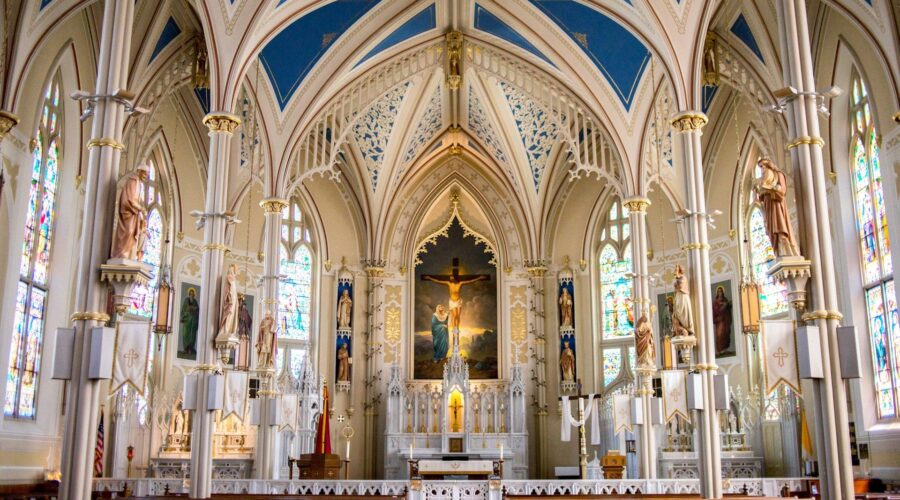
Discover the Rich History and Vibrant Community of St. Thomas More Parish
Introduction
Nestled in the heart of Sarasota, Florida, St. Thomas More Parish stands as a beacon of faith, community, and service. With over 60 years of history, the parish has played a vital role in shaping the spiritual and social landscape of the region. This comprehensive blog post will delve into the fascinating story of St. Thomas More Parish, exploring its rich past, dynamic present, and bright future.
Our Humble Beginnings (1959-1964)
The seeds of St. Thomas More Parish were sown in the late 1950s when a small group of Catholic families recognized the need for a new parish in Sarasota. They purchased a plot of land on Bee Ridge Road and began fundraising for the construction of a church. On April 26, 1959, the Most Reverend Coleman F. Carroll, Bishop of Miami, blessed the cornerstone of the new church.
The Parish Takes Root (1964-1980)
On December 20, 1964, St. Thomas More Church was dedicated and officially established as a parish. The early years were marked by a spirit of growth and enthusiasm as parishioners worked together to build a vibrant community. The parish school, St. Thomas More Catholic School, opened its doors in 1967 to serve the educational needs of the growing Catholic population.
- In 1971, the parish purchased additional land and began construction on a new parish center.
- In 1974, the Most Reverend Charles B. McLaughlin, Bishop of St. Petersburg, dedicated the new parish center.
- In 1980, the parish hall was expanded to accommodate the growing number of parishioners.
A Time of Transformation (1980-2000)
The 1980s and 1990s witnessed significant changes for St. Thomas More Parish. The parish celebrated its 25th anniversary in 1984, marking a quarter-century of service to the community. In 1997, the church was renovated and expanded to meet the needs of the growing congregation. St. Thomas More School also underwent renovations, adding new classrooms and facilities.
The Parish Today
Today, St. Thomas More Parish is a thriving community of over 3,000 families. The parish offers a wide range of ministries, including:
Website
- Liturgical ministries, such as Mass servers, altar servers, and liturgical music.
- Sacramental ministries, such as Baptism, Reconciliation, and Matrimony.
- Educational ministries, such as religious education programs and adult faith formation.
- Service ministries, such as outreach to the poor and homebound, and support for the sick and elderly.
The Future of St. Thomas More Parish
As St. Thomas More Parish looks towards the future, it remains committed to its mission of serving the spiritual and social needs of the community. The parish has plans for continued growth and expansion, including:
Project Timeline Renovation of the church sanctuary 2024 Expansion of the parish center 2026 Construction of a new athletic field 2028 Conclusion
St. Thomas More Parish is a vibrant and growing community of faith, service, and love. With a rich history and a bright future, the parish is poised to continue playing a vital role in the spiritual and social life of Sarasota for many years to come. We invite you to join our community and experience the joy and fulfillment of being a part of St. Thomas More Parish.
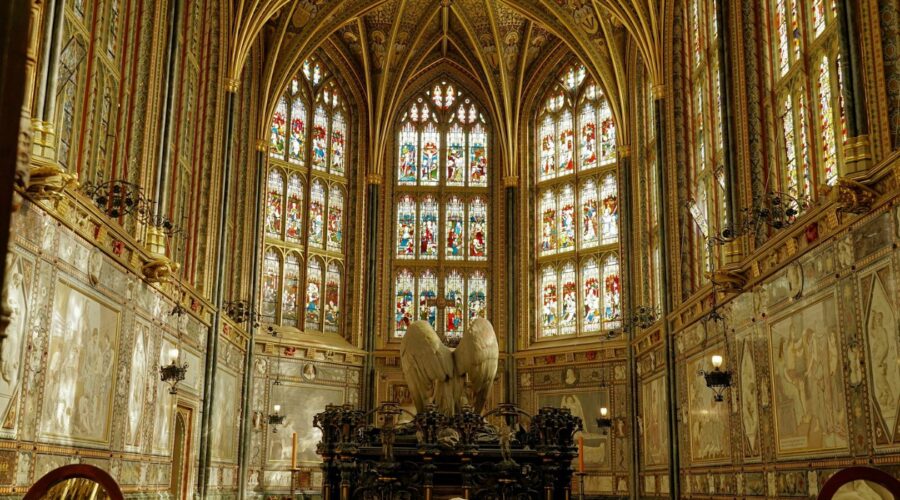
Our Lady of Perpetual Help Church: A Haven of Faith and Devotion
Introduction
Nestled amidst the bustling streets of Baltimore, Maryland, stands Our Lady of Perpetual Help Church, a cornerstone of the Catholic faith and a sanctuary for countless souls seeking spiritual guidance and solace. Founded in 1871, this historic church has witnessed over a century of unwavering faith and devotion, serving as a beacon of hope for generations of parishioners.
History and Significance
The history of Our Lady of Perpetual Help Church is intertwined with the rise of the Irish Catholic community in Baltimore. In the mid-19th century, a large influx of Irish immigrants flocked to the city, seeking a better life in America. They brought with them their strong faith and a desire to establish a parish of their own.
In 1866, Father Patrick McManus, a Redemptorist missionary, purchased land on the corner of Light and Davis Streets. On August 13, 1871, the cornerstone of Our Lady of Perpetual Help Church was laid, and the church was formally dedicated in 1873. Over the years, the church underwent several expansions and renovations, including the addition of a school and a convent.
Architecture and Design
Our Lady of Perpetual Help Church is a magnificent example of Gothic Revival architecture. Its exterior features soaring spires, pointed arches, and intricate stone carvings. The interior of the church is equally impressive, with its high vaulted ceilings, stained glass windows, and ornate altars.
Notable Architectural Features:
- Twin Spires: The church’s twin spires are a prominent landmark in the neighborhood and can be seen from miles around.
- Pointed Arches: The church’s pointed arches are characteristic of Gothic architecture and create a sense of height and grandeur.
- Stained Glass Windows: The church’s stained glass windows depict scenes from the Bible and the lives of saints, flooding the interior with vibrant colors.
- High Altar: The high altar is the focal point of the church and is adorned with elaborate carvings and a beautiful painting of Our Lady of Perpetual Help.
Devotion to Our Lady of Perpetual Help
Our Lady of Perpetual Help Church is named in honor of the venerated icon of Our Lady of Perpetual Help, known throughout the world for its miraculous powers. The icon depicts Mary holding the Christ Child, who is looking at Saint Joseph for comfort. The icon is believed to have originated in Crete in the 15th century and was brought to Rome in the 1860s.
Devotion to Our Lady of Perpetual Help has flourished at the church since its founding. Parishioners have reported countless graces and miracles through the intercession of Our Lady. The church has become a popular destination for pilgrims seeking spiritual assistance and healing.
Parish Life and Activities
Our Lady of Perpetual Help Church is a vibrant and active parish with a wide range of ministries and programs for all ages.
Ministries:
- Altar Servers: Young people assist the priest during Mass.
- Eucharistic Ministers: Parishioners distribute Holy Communion at Mass.
- Lectors: Parishioners read the Scripture readings at Mass.
- Music Ministry: The church has a choir, a cantors’ program, and instrumentalists who enhance the liturgy with their musical talents.
- Outreach Ministries: The church supports various outreach programs, including a soup kitchen, a homeless shelter, and a nursing home ministry.
Activities:
- Religious Education: The church offers religious education classes for children and adults.
- Bible Studies: The church hosts weekly Bible studies for parishioners to deepen their faith.
- Youth Group: The church has a vibrant youth group that provides faith formation and social activities for young people.
- Choir: The church’s choir rehearses weekly and performs at Masses, weddings, and other special occasions.
- Parishioner Socials: The church hosts various social events throughout the year, such as parish picnics, potlucks, and dances.
Community Impact
Our Lady of Perpetual Help Church has played a significant role in the Baltimore community for over 150 years. The church provides spiritual guidance, support, and a sense of belonging to its parishioners.
Beyond its religious mission, the church has been a beacon of hope and support during times of crisis. In the aftermath of the Great Baltimore Fire of 1904, the church served as a temporary shelter for the homeless. During World War II, the church offered prayers and support to the soldiers and their families.
Visiting the Church
Our Lady of Perpetual Help Church is open to visitors daily for prayer and meditation. Guided tours are available upon request. The church is located at 1225 Light Street, Baltimore, MD 21230.
Mass Times Day Time Monday 8:00 AM Tuesday 8:00 AM Wednesday 8:00 AM Thursday 8:00 AM Friday 8:00 AM Saturday 8:00 AM, 4:00 PM Sunday 8:00 AM, 10:00 AM, 12:00 PM, 5:00 PM Conclusion
Our Lady of Perpetual Help Church is more than just a building; it is a living testament to the power of faith. For generations, this historic church has served as a sanctuary for the faithful, offering spiritual guidance, solace, and a sense of community. Its devotion to Our Lady of Perpetual Help has inspired countless miracles and graces, making it a beacon of hope for all who seek her intercession.
Whether you are a lifelong parishioner or a curious visitor, Our Lady of Perpetual Help Church welcomes you with open arms. Come and experience the beauty, history, and spirituality of this beloved Baltimore landmark.
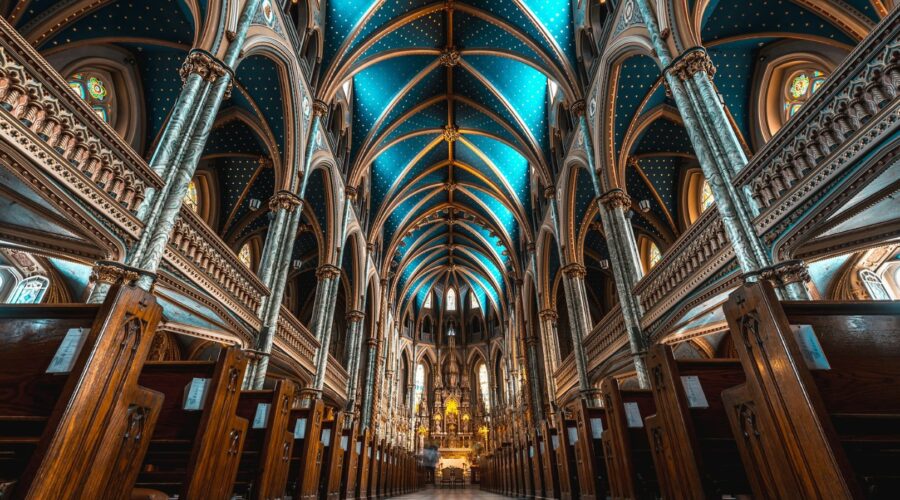
Annunciation Catholic Church: A Guide to a Revered Religious Landmark
Annunciation Catholic Church stands as a beacon of faith and devotion, inviting worshippers and visitors alike to immerse themselves in its rich history and spiritual significance.
History and Founding
The origins of Annunciation Catholic Church trace back to 1841 when a small group of Catholics gathered for worship in a rented hall on Franklin Street in Chicago. As the congregation grew, the need for a dedicated church became apparent.
In 1853, Bishop Anthony O’Regan purchased land at 1801 South Blue Island Avenue for the construction of a new church. The cornerstone was laid on July 2, 1854, and the church was completed and dedicated on August 2, 1855.
Over the years, Annunciation Catholic Church has undergone several renovations and expansions to accommodate its growing congregation. The most significant renovation occurred in 1908 when the current church building was built.
Architecture and Design
Annunciation Catholic Church is a classic example of Gothic Revival architecture, characterized by pointed arches, ribbed vaults, and large stained-glass windows. The church’s exterior is constructed of red brick and limestone, while the interior features elaborate carvings and decorative details.
Floor Plan
The church is cruciform in shape, with a nave, transepts, and a chancel. The nave is the main body of the church, where the congregation gathers for worship. The transepts are the arms of the cross, which intersect the nave, and the chancel is the elevated area at the east end of the church, where the altar is located.
Stained-Glass Windows
One of the most striking features of Annunciation Catholic Church is its impressive collection of stained-glass windows. These windows depict scenes from the life of Christ, the Virgin Mary, and other saints.
Parish Life and Activities
Annunciation Catholic Church is a vibrant and active parish with a wide range of programs and activities for its members. These include:
- Masses (daily and weekly)
- Sacramental preparation (Baptism, Confirmation, Marriage)
- Religious education classes
- Youth groups
- Social justice outreach
Historical Significance and Cultural Impact
Annunciation Catholic Church has played a significant role in the history and culture of Chicago. It was one of the first Catholic churches established in the city and has been a center of Catholic life for generations.
The church has also been a witness to many historical events, including the Great Chicago Fire of 1871 and the World’s Columbian Exposition of 1893.
How to Visit
Annunciation Catholic Church is open to the public for Mass and other events. Visitors are welcome to explore the church’s beautiful architecture, admire its stained-glass windows, and learn about its rich history.
Mass Schedule
Click here for the latest Mass schedule.
Location and Directions
Address: 1801 South Blue Island Avenue, Chicago, IL 60608
Directions:
* **By car:** Annunciation Catholic Church is easily accessible by car. There is ample street parking available.
* **By public transportation:** The church is located near the CTA’s 18th Street station on the Blue Line.Accessibility
Annunciation Catholic Church is wheelchair accessible. There is a ramp at the front entrance of the church and an elevator to the second floor.
Contact Information
Phone: (312) 421-5400
Website: www.annunciationchurchchicago.org
Email: [email protected]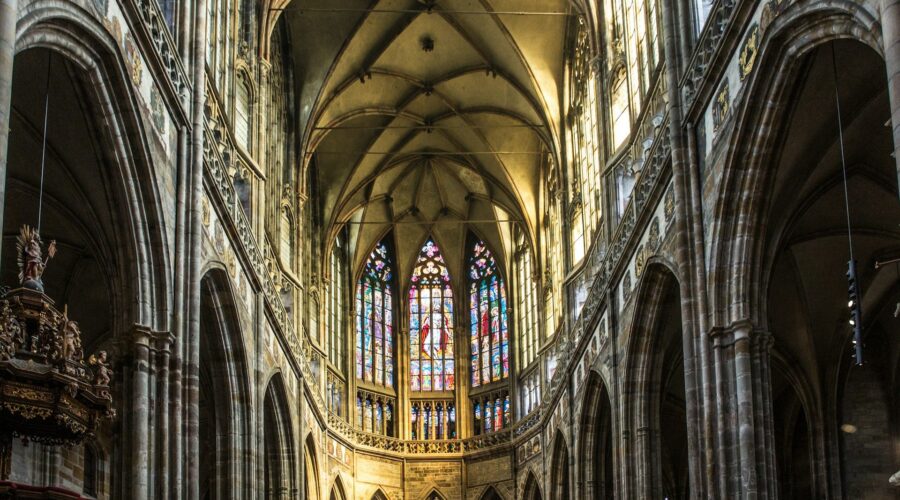
Welcome to the Brethren Church
The Brethren Church is a Christian denomination that originated in Germany in the 1700s. Brethren churches are known for their emphasis on simple living, pacifism, and service to others. Today, there are Brethren churches all over the world, with over 1 million members.
History of the Brethren Church
The Brethren Church was founded by Alexander Mack in 1708 in Schwarzenau, Germany. Mack was a Mennonite who was dissatisfied with the state church of his time. He believed that the church should be based on the teachings of Jesus Christ and that it should be separate from the state. Mack and his followers were persecuted for their beliefs, and they were forced to flee Germany in 1719. They eventually settled in Pennsylvania, where they established the first Brethren church in America.
Beliefs of the Brethren Church
The Brethren Church is a Protestant denomination, and it shares many of the same beliefs as other Protestant churches. However, there are some key beliefs that are unique to the Brethren Church:
- Pacifism: Brethren believe that war is always wrong. They refuse to participate in war, even in self-defense.
- Simple living: Brethren believe that Christians should live a simple life, free from material possessions.
- Service to others: Brethren believe that Christians are called to serve others, especially the poor and the needy.
Practices of the Brethren Church
Brethren churches are known for their simple worship services. They typically use a cappella music, and they focus on the preaching of the Bible. Brethren also practice communion and baptism.
In addition to their worship services, Brethren churches are also involved in a variety of outreach programs. These programs include disaster relief, feeding the hungry, and providing shelter for the homeless.
The Brethren Church Today
Today, the Brethren Church is a growing denomination. There are over 1 million Brethren members in over 100 countries. The Brethren Church is committed to its core beliefs of pacifism, simple living, and service to others.
How to Find a Brethren Church
If you are interested in finding a Brethren church, you can visit the website of the Church of the Brethren. The website provides a directory of Brethren churches in the United States and Canada.
Additional Resources

Unveiling the Power of the Novena to Our Mother of Perpetual Help
Introduction
Immerse yourself in the miraculous and life-changing world of the Novena to Our Mother of Perpetual Help. This powerful prayer has been recited by millions of faithful for centuries, seeking solace, strength, and heavenly intervention in their lives. In this comprehensive guide, we will delve into the history, significance, and step-by-step process of performing this sacred devotion.
History of the Novena
Origin:
The Novena to Our Mother of Perpetual Help originated in the late 19th century in Rome. In 1866, Pope Pius IX entrusted the Redemptorist Fathers with a sacred icon of the Blessed Virgin Mary, now known as Our Mother of Perpetual Help. The icon, believed to date back to the 13th century, depicts Mary holding the Infant Jesus, with Saint Alphonsus Liguori and Saint Gerard Majella pleading at her feet.
Miraculous Intervention:
Shortly after the arrival of the icon in Rome, numerous miracles were attributed to the intercession of Our Mother of Perpetual Help. People from all walks of life flocked to the church, seeking her aid in their times of need. The growing devotion and reported miracles led to the establishment of the first Novena in 1871.
Significance of the Novena
Special Graces:
The Novena to Our Mother of Perpetual Help is a special devotion that offers many graces to the faithful. It is believed that through this prayer, one can:
- Obtain special favors and assistance from Mary;
- Experience increased faith, hope, and love;
- Find healing for physical and spiritual ailments;
- Surmount obstacles and challenges;
- Grow in virtue and holiness.
Motherly Intercessor:
Our Mother of Perpetual Help is known for her compassionate and loving nature. She is often referred to as the “Mother of All Helpers” or the “Patroness of the Hopeless.” By praying this Novena, one can tap into Mary’s intercessory power, asking her to bring their petitions to her Son, Jesus Christ.
Step-by-Step Guide to the Novena
Duration:
The Novena to Our Mother of Perpetual Help is typically recited for nine consecutive days. Some choose to pray it during a specific period, such as a particular feast day or during times of distress.
Prayer Structure:
Each day of the Novena consists of specific prayers:
- Opening Prayers:
- Sign of the Cross (in the name of the Father, and of the Son, and of the Holy Spirit.);
- Act of Contrition (O my God, I am heartily sorry… );
- Invocation to the Holy Spirit (Come, Holy Spirit… );
- Novena Prayer:
- Pray the Novena prayer for that specific day.
- Litany of Intercession:
- Recite the Litany of Our Mother of Perpetual Help.
- Concluding Prayers:
- Glory Be to the Father… ;
- Hail Mary, full of grace… ;
- O Most Beautiful Flower… (optional devotion);
- Sign of the Cross.
Suggested Schedule:
Here is a simple schedule for praying the Novena:
Day Prayer Focus 1 For faith and hope 2 For strength in trials 3 For healing of mind and body 4 For protection against harm 5 For forgiveness of sins 6 For conversion of sinners 7 For peace in the world 8 For the dying and departed 9 For special intentions and petitions Tips for Effective Prayer
To enhance the power of your Novena, consider the following tips:
- Set aside a specific time each day for prayer;
- Find a quiet and comfortable place where you can focus;
- Approach the prayer with a sincere and open heart;
- Reflect on the words of the prayers and meditate on their meaning;
- Pray with persistence and trust in God’s will;
- Be patient and don’t expect immediate results;
- Share your prayer intentions with others and ask for their support;
- If possible, visit a church or shrine dedicated to Our Mother of Perpetual Help.
Conclusion
The Novena to Our Mother of Perpetual Help is a powerful and transformative prayer that has touched the lives of countless individuals. By embracing this devotion, we can deepen our connection with Mary, the Mother of God, and experience her loving intercession in our lives. Whether you are seeking spiritual growth, physical healing, or strength in times of trial, the Novena to Our Mother of Perpetual Help offers hope and guidance on your journey. May the grace of Our Mother intercede for us and bring us closer to the love of her Son, Jesus Christ.
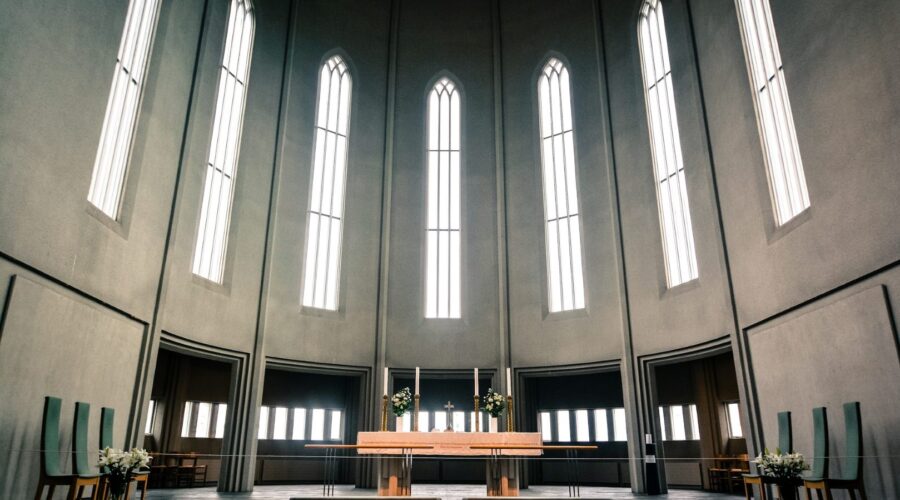
St. Rose of Lima: The First Saint of the Americas
Introduction
St. Rose of Lima is a prominent figure in the history of the Catholic Church. She was the first saint of the Americas and is known for her piety, charity, and miraculous abilities. Her story is an inspiration to many and continues to be celebrated today.
Early Life
Rose was born in Lima, Peru, on April 20, 1586. Her parents, Gaspar Flores and Maria de Oliva, were devout Catholics. Rose was baptized at the age of three and received her First Communion at the age of five. Her early life was marked by a deep love for God and a desire to serve others.
Devotion to the Blessed Sacrament
Rose had a special devotion to the Blessed Sacrament. She would spend hours in prayer before the tabernacle and often received Holy Communion. She also had a great love for the Eucharist and would often distribute it to the poor and sick.
Visions and Miracles
Rose was known for her visions and miracles. She is said to have received visions of the Virgin Mary, Jesus Christ, and the saints. She also performed many miracles, including healing the sick, raising the dead, and controlling the forces of nature.
The Miracle of the Roses
One of the most famous miracles attributed to Rose is the Miracle of the Roses. According to legend, Rose was arrested by Spanish authorities for her religious practices. While in prison, she asked for some roses to be brought to her. The authorities refused, as it was winter and there were no roses blooming. Miraculously, a basket of fresh roses appeared in Rose’s cell, convincing the authorities to release her.
Founding of the Dominican Order in Peru
In 1606, Rose founded the Dominican Order in Peru. She was the first woman to establish a religious order in the Americas. The order was dedicated to the care of the poor and sick, and it quickly spread throughout the region.
Death and Canonization
Rose died on August 24, 1617, at the age of 31. She was canonized by Pope Clement X in 1671. Her feast day is celebrated on August 23.
Legacy
St. Rose of Lima is a beloved saint in the Americas. She is known for her humility, charity, and love of God. Her story is an inspiration to many and continues to be celebrated today.
Shrines and Relics
There are several shrines dedicated to St. Rose of Lima in the Americas. The most famous is the Basilica of San Pedro, located in Lima, Peru. The basilica houses Rose’s relics and is a popular pilgrimage site.
Feast Day Celebrations
St. Rose of Lima’s feast day is celebrated on August 23 with special masses, processions, and other festivities. In Peru, the feast day is a national holiday.
Conclusion
St. Rose of Lima is a powerful example of faith, charity, and devotion to Christ. Her life is a reminder of the power of God’s love and the importance of serving others.